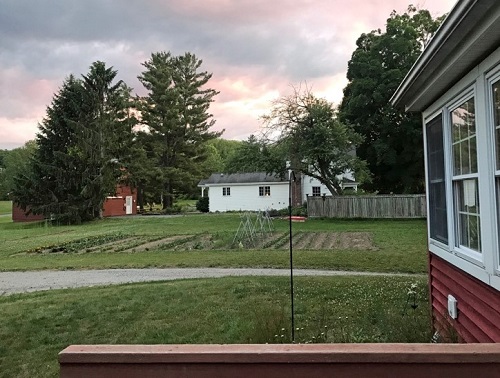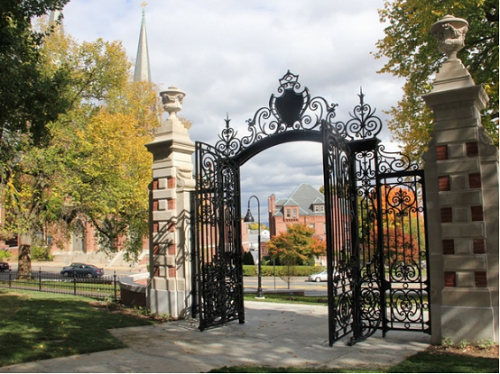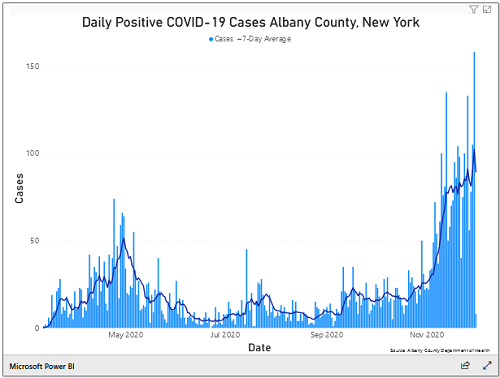There are three separate living spaces on New Fadum Farm. Deborah and I live in the Little Red House (about 900 square feet) nestled up against the rail line. About fifty yards away, across Deborah’s vegetable garden, we can see the Old White Farmhouse and the Barnhouse. The White Farmhouse is where Deborah and I lived for 40 years, raised our daughters and built our lives. We were elated several years ago when our daughter and her husband approached us with an offer to buy the house. They now live there with our three granddaughters.
The Barnhouse was our original animal quarters when Deborah first started with milking goats, a few sheep, some chickens, and rabbits. About twenty years ago when Deborah’s dad died, we converted the Barnhouse to a small apartment for Deborah’s mom and moved the last animals out back to the new animal barns. Through the years, the Barnhouse has hosted visitors, scholars on sabbatical, and generations of graduate students, most coming to study system dynamics at the University.
When the COVID-19 pandemic caused a general lock-down in our region, there were six of us living on the farm: Deborah and David in the Red House, our daughter, her husband and two children in the White Farmhouse. Last May a third granddaughter was born, so now seven of us are living in our “bubble” on New Fadum Farm. We call it a bubble because we have developed and observe a set of protocols for interacting with the world that we hope and expect will keep us safe and let us interact freely with each other inside our bubble.
The bubble is a great blessing. We share meals and find time to socialize, even around a campfire on warm summer nights. Almost every day our granddaughters come over the lawn by Deborah’s vegetable garden to visit with us. I especially enjoy working in the barn with our granddaughters. We recommend that, in these days of the pandemic, everyone try to create and live in as large a bubble as is safely possible.
That is why we got excited when Deborah read a news feed about the Canadian government’s encouragement of “double bubbling”. Our youngest daughter, with her wife and toddler son, had moved out of their apartment in Brooklyn to live with our daughter-in-law’s family in Rhode Island. They had their own multi-generational bubble of seven persons living together on a small farm in a remote setting. After detailed thinking and planning and talking, we decided we could take the Canadians’ lead and create a “double bubble” linking New Fadum Farm with a similar living unit in Rhode Island that observes almost identical safety protocols.
Deborah and I made the almost three-hour drive to Rhode Island without stopping. Voila! In doing so we had doubled the size of our bubble. We encourage others to carefully (carefully!) consider doing the same.
We haven’t yet figured out how to safely extend our bubble to include our eldest daughter, who is one of the front-line heroes working in the Emergency room up in Saratoga.
This Story Has a Lesson
A “double bubble” occurs when two households that know and trust each other well decide to merge into a single unit observing common protocols and safety standards. Double bubbling, if done well and carefully, can safely expand our deeply needed social contacts.
Read More to Dig Deeper
Shortly after our trip to Rhode Island, we experienced some of the complications that can arise from a double bubble set up. Our daughter’s niece, a toddler, is a frequent visitor to their bubble in Rhode Island. She had recently spiked a temperature and her pediatrician sent her for a COVID-19 test. Back in Upstate New York, we got a call about this turn of events and had to consider what this might mean for our own quarantine procedures. Were Deborah and I, having just returned from Rhode Island, obliged to isolate ourselves from the others within our New York portion of the double bubble? We breathed easier as soon we learned to our relief that the niece’s elevated temperature was a false alarm. Her COVID-19 test result came back “negative.” But what if it hadn’t?





